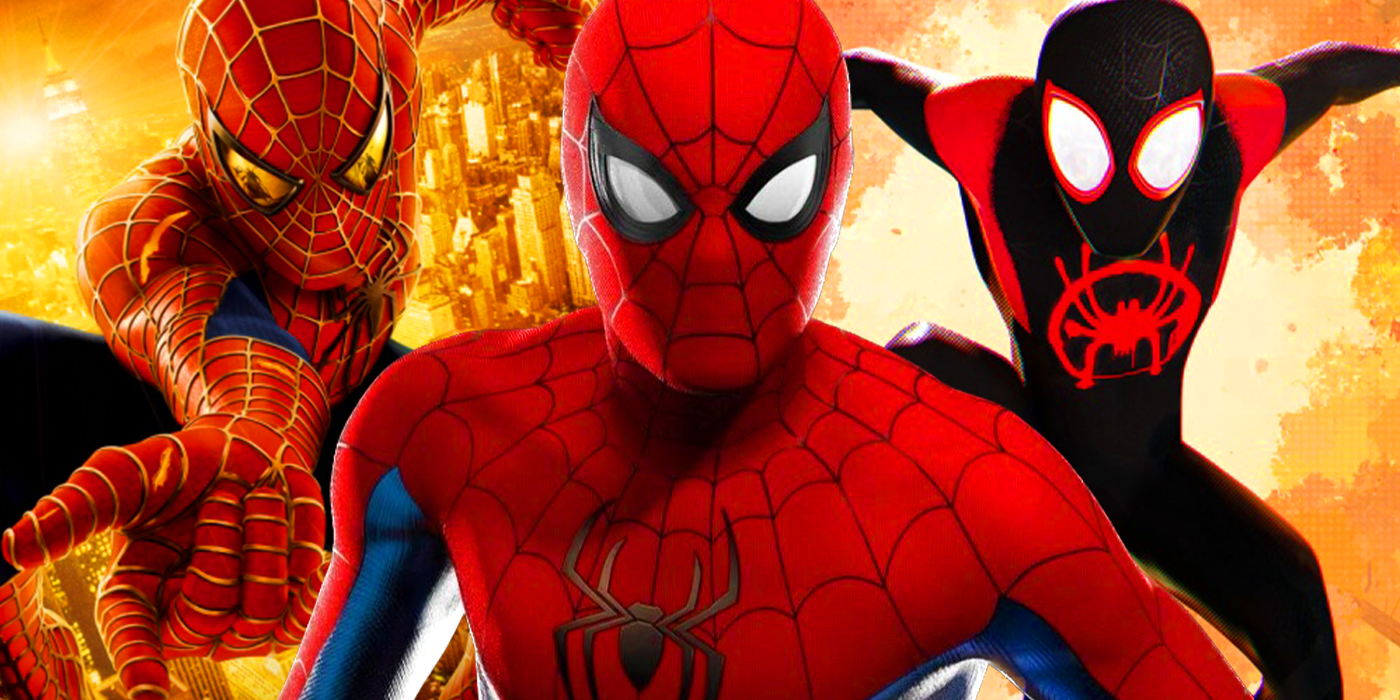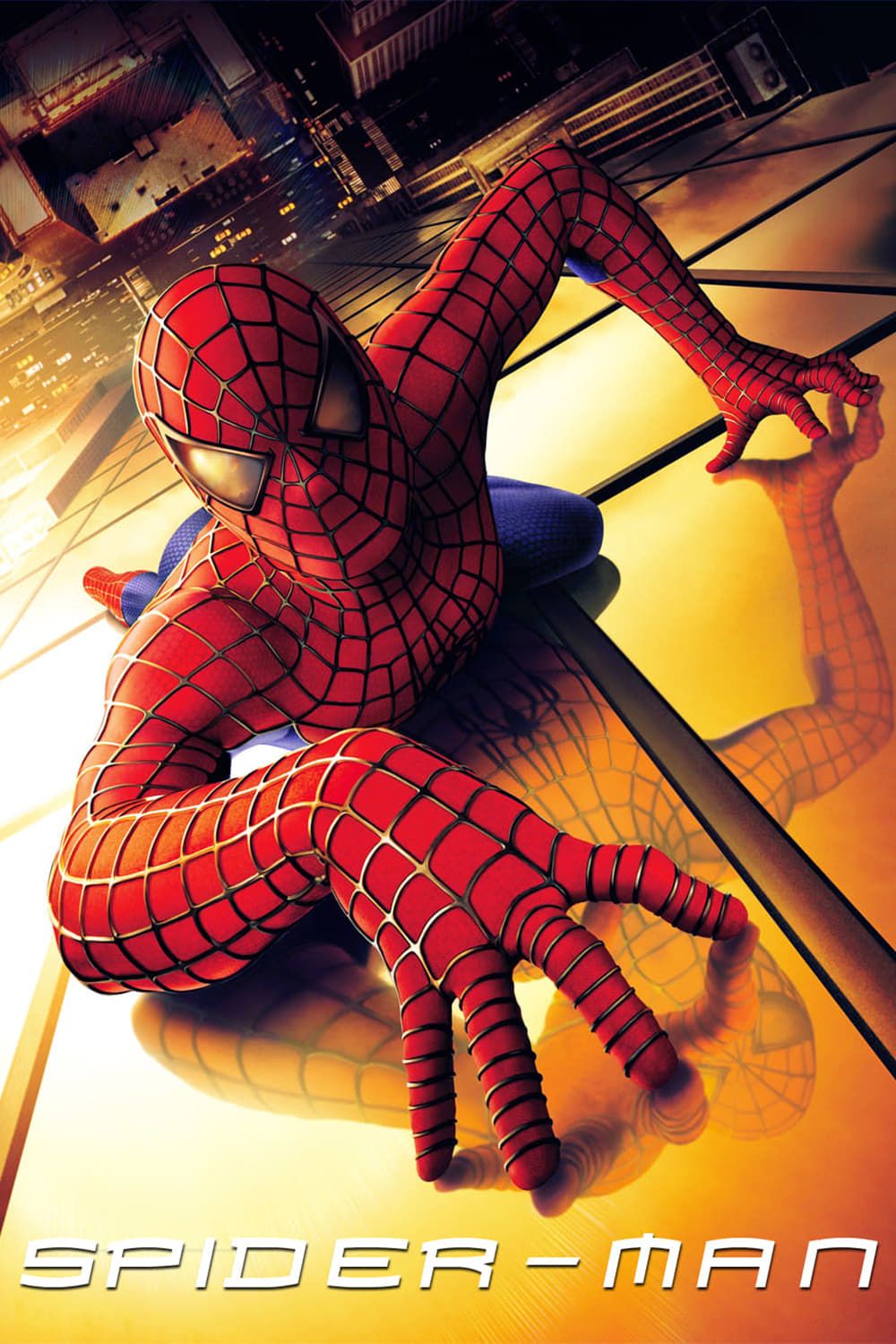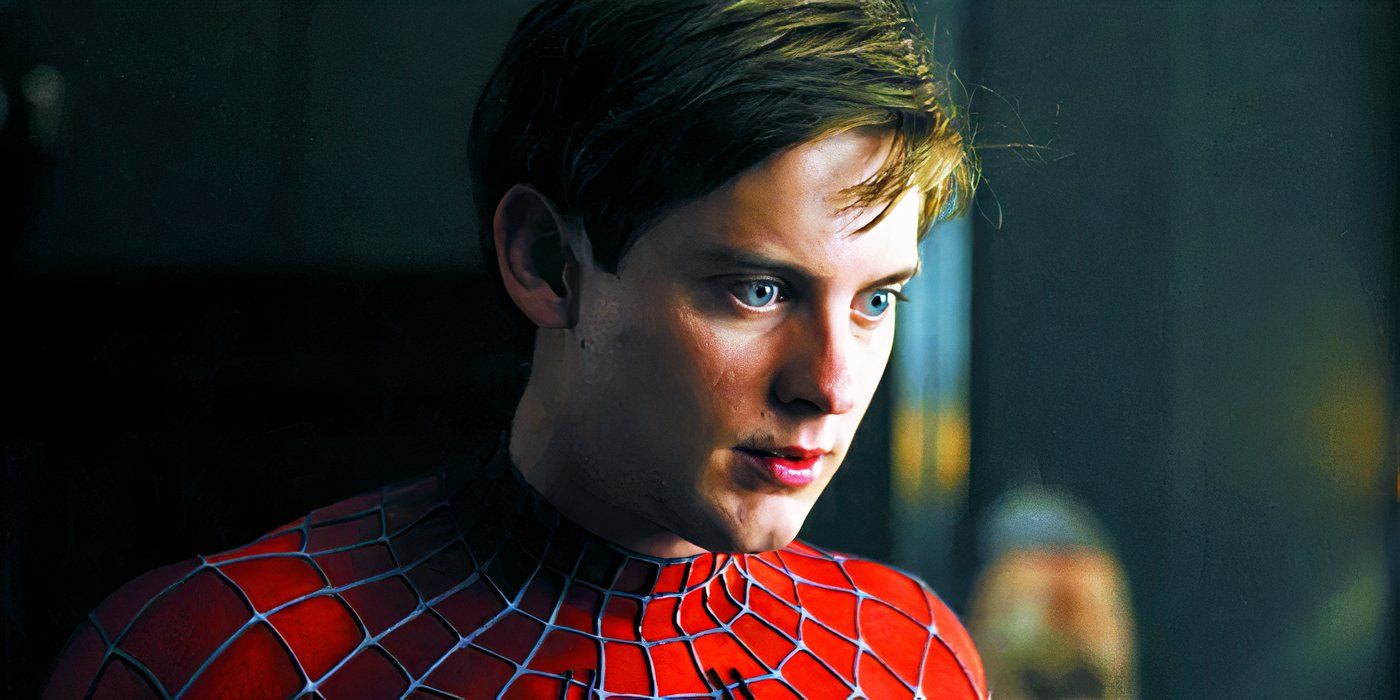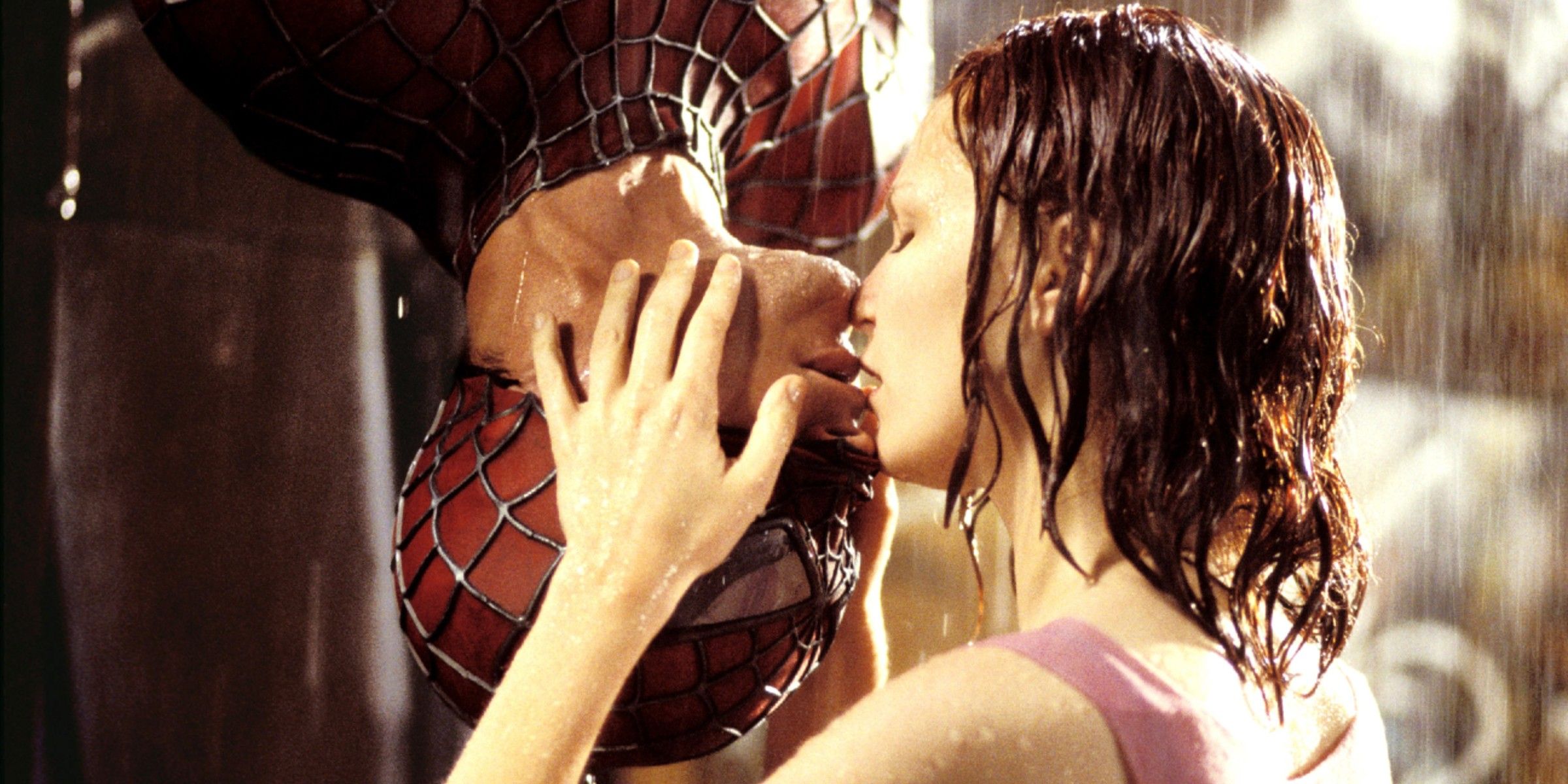It would actually be very easy to be cynical about Spider-Man: as the first movie to gross $100m in its opening weekend, and one of the two Marvel prototypes (along with 2000’s X-Men) for the modern comic book movie, it set trends that would become ubiquitous with everything naysayers like to hate about the superhero bubble. That huge box office milestone was also the start of the race to gamify instant box office takes that has probably killed a lot of good creative seeds before they were ever allowed to blossom. But the first in Sam Raimi’s Spider-Man trilogy doesn’t really have anything direct to do with those: it’s not a cynical ploy.
Instead, Spider-Man feels almost old-school in its simplicity, relying on recognizable tropes from countless other heart-filled action movies, but injecting them into one of the most recognizable character brands in the history of media, with a flourish of excellent effects set-pieces. Spider-Man’s cast is pretty stellar in modern terms – Tobey Maguire, Kirsten Dunst, Willem Dafoe, JK Simmons, and James Franco leading, of course – and even back then, they weren’t exactly nobodies. Add a fairly major budget of $139m (almost twice what was initially planned), and you can see the logic of why it’s so good, but not quite the reasons. Not quite the magic.
Spider-Man is the first film in Sam Raimi’s trilogy starring Tobey Maguire as Peter Parker. Released in 2002, the film introduced superhero fans to a live-action Norman Osborn, played by Willem Dafoe, who is transformed into his villainous alter ego, Green Goblin, after being forced out of Oscorp Industries. At the same time, Peter Parker is grappling with his newfound abilities as the iconic wall-crawler.
- Release Date
-
May 3, 2002
- Runtime
-
121 Minutes
- Cast
-
Tobey Maguire
, Willem Dafoe
, Kirsten Dunst
, James Franco
, Cliff Robertson
, Rosemary Harris
, J.K. Simmons
, Joe Manganiello
What is all-too-easy to overlook is the fact that Spider-Man set the foundation for its superior sequel to be even bolder, braver, and better. Yes, the ending is somewhat retconned to bring MJ and Peter’s romance back into play, but that was a somewhat necessary evil. Rewatching Raimi’s Spider-Man two decades later, you can really feel the confidence in delivery that then set the blueprint for the follow-up.
Tobey Maguire Is Still A Joy To Watch As Peter Parker…
Sorry Tom, There’s Never Been A Better Parker
On paper, the lead of The Cider House Rules was absolutely not the most logical choice to play Marvel’s crown prince of superheroes, but boy what a gamble. Sam Raimi was convinced of Maguire’s credentials from that historical drama, and rewatching it, you can see why the disconnect didn’t exist for the director. In The Cider House Rules, Maguire is the heart of the story, assured and subtly brilliant, and more than anything irresistibly sympathetic and strong despite presumed vulnerability. It’s the wrong era and genre, but you can see the bones of Peter Parker in there.
He is a prototypical outsider gifted the keys to make something better of himself.
So Maguire’s casting ignored the studio’s expectations of a swashbuckling jock (which co-star Joe Manganiello – who also auditioned – might have brought to the role), but completely nailed what Peter Parker should always be: a nice-guy dork who exists slightly on the side of things. He’s unremarkable, but in a completely endearing way, and I’m not sure anyone from the list of alternatives who were considered alongside Maguire would have managed it.
In 2024, I’m struck by how much Parker’s arc in Spider-Man is a weirdly appropriate parallel for a certain element of terminally online young men. He’s an outsider, bullied by an alpha chad, who loves a girl who chooses a rich “bad boy”, and then ultimately devotes himself to the grind. You have no idea how much I hate that I wrote that, but it’s exactly why Maguire’s version of the character connected so well, but without any of the negative extrapolations that modern discourse bolts on. It’s still worth repeating that he is a prototypical outsider gifted the keys to make something better of himself. He’s a dork’s fantasy brought to life.
Complaints About Maguire’s Spider-Man Miss The Mark
With Great Power Comes… Awkward But Noble Acceptance
There’s long been discussion that Maguire’s Spider-Man is less perfect than his Peter Parker, but he still set a high bar. Because of the trade-off in casting for Peter’s heart, this version of Spider-Man isn’t as cocky or as quippy, and both Andrew Garfield and Tom Holland’s versions outshine him there. But Maguire put in the work to make his physicality match the needs of the role thanks to an intensive workout, and there’s something still very pleasing in how well he captures the necessary unexpectedness of Peter’s big secret.
And there’s one thing even gentle criticisms of Maguire’s Spider-Man always get wrong: he’s not supposed to be what lots of people want him to be. Spider-Man isn’t an exaggerated performance that Peter adopts, like Batman is to Bruce Wayne or the Goblin is to Norman; it makes no sense that he’d suddenly become more cocky and assured just because he’s in a mask. Instead, Peter’s whole point is to explore the idea of great power being thrust upon someone completely unsuited, and Spider-Man is the logical result. That’s why Maguire’s casting works so well, so judging him for not matching the misplaced idea of what he should be is a little unfair.
Willem Dafoe’s Green Goblin Is Still The Best Spider-Man Movie Villain
Green Goblin Clears Every Other Competitor
Let’s be fair here, there’s never been a better Spider-Man movie villain than Willem Dafoe’s Norman Osborn. You know it. I know it. Marvel Studios knew it when they called he and Maguire up to return 20 years later. I’ve actually given a lot of thought to whether Dafoe is the greatest comic book movie villain of all time, and while there are contenders – Tom Hiddleston’s Loki, Alfred Molina’s Doctor Octopus, Heath Ledger’s Joker very pertinently – I’m not so sure any are better.
Dafoe wasn’t the first choice to play Norman Osborn, and his metallic-paint tech suit wasn’t the first approved design for Green Goblin, but it’s remarkable how well changed plans can work out. Dafoe plays Osborn as formidable without the cartoonish overtones of a megalomaniac (his volatility is more subtly expressed), so when he goes full Goblin, it’s a true joy. He already has this sort of otherworldly quality to him as an actor that firmly plants him in the bracket of interesting character actor rather than bona fide leading man, and he really leans into that here. And he’s better than either label.

Related
All 12 Spider-Man Movies Ranked
Spider-Man has starred in twelve films over four decades. Here’s every Spider-Man movie ranked, including both live-action adventures and animation.
This version of Osborn shows a surprisingly vulnerable side, thanks to the decision to make Goblin a sort of psychological infection. Yes, the trope of the “mad scientist” who experiments on himself and accidentally creates his own Promethean nightmare as part of his psyche isn’t exactly new, but Dafoe plays it with all the unhinged delight of a horror movie villain. So even when he’s costumed as Goblin who is in turn in drag in a burning building, it’s not detrimentally goofy.
Years later, of course, Spider-Man: No Way Home brought Dafoe back to play Osborn again and made him a villain again, because absolutely nobody in the world wanted to see this character turned into a hopeless sad sack. In that belated sequel, we got another chance for Dafoe to battle with his own helmet and his own mind, but the original version is just the best. Dafoe’s transformation is so complete that the decision to change his teeth for each side of the character went unnoticed for years. It’s a clever detail, but Dafoe’s performance already gets you there.
Spider-Man’s Supporting Cast Is Just As Great As The Stars
Raimi Amassed An Impressive Group To Flesh Out His World
Dafoe and Maguire are the best things about Spider-Man, but not the only great things. There are joyous small roles like Macho Man Randy Savage as wrestler Bonesaw and Joe Mangianello as complete douchebag Flash Thompson, and there are more significant, impressive ones. Kirsten Dunst is very good as Mary Jane in a way that covers up the fact that her part in the story is to just have things happen to her, and James Franco plays the slightly prickish spoilt rich boy with enough disarming charm that his friendship with Peter just about makes sense.
JK Simmons, meanwhile, is so good that whenever anyone mentions J Jonah Jameson, it’s his face, his speech, and his mannerisms that are conjured in my head immediately. And then there’s Cliff Robertson as Uncle Ben, and Rosemary Harris as Aunt May: I’m not sure if it’s familiarity or just a trick of perfect casting, but again, I cannot separate either from the roles, nor the characters from the actors, no matter which way I come to think of them. Robertson’s “with great power…” line feels like it was the origin of the whole idea, while May’s comforting, motherly presence is like a blanket. Like Michael Caine’s Alfred in Nolan’s Batman trilogy.
The Effects and Action Sequences Have Lost None Of Their Magic
The New York Swinging Scenes Are Still Utterly Intoxicating
22 years might as well be a lifetime in superhero blockbusters, but Spider-Man has aged remarkably well because it refused to just blend in. Sam Raimi’s work with the camera, particularly in the city swinging sequences, feel perfectly matched to the energy needed. Raimi was never afraid to bring some unconventional, creative shots to the table, to the degree that there are some very obviously Raimi-like shots here, even though he’s playing with someone else’s toys. He would go on to do the same in Doctor Strange in the Multiverse of Madness.
The action sequences are excellent: well-choreographed fight sequences are in there, but the most memorable points are those kinetic set pieces that give Parker the chance to show off. Raimi lets the audience drink in the awesome spectacle, taking a lead from Richard Donner’s Superman approach to present a “you’ll believe a man can swing” variation. Watching those scenes now, you could be forgiven for expecting them to have aged poorly, but they’re remarkably impressive (and not just because such fast-paced CG scenes in modern superhero movies have stopped getting any better).
Final Thoughts On Spider-Man
The genius of Spider-Man is that it takes some fairly well-established tropes and manages to own them. The story is full of cliches, but the performances are so authentically strong, and Raimi’s assured creativity with his lens is so recognisable that nothing feels outdated or unwelcome.
The film will forever be remembered for giving us Maguire’s Spider-Man, JK Simmons’ Jameson, and Willem Dafoe’s best superhero movie villain ever, but it would be a tragedy if people took those big strokes and the world-changing part Spider-Man played in creating the genre and ignored the chance to just sit and watch a great film for its smaller flashes of brilliance. Masterpieces are overlooked because of familiarity, but that just means you don’t get to watch brilliance over and over.

- Release Date
-
May 3, 2002
- Runtime
-
121 Minutes
- Cast
-
Tobey Maguire
, Willem Dafoe
, Kirsten Dunst
, James Franco
, Cliff Robertson
, Rosemary Harris
, J.K. Simmons
, Joe Manganiello
- Tobey Maguire is still the definitive Peter Parker
- Willem Dafoe’s duel performance only gets better with age
- The effects hold up surprisingly well
- Swinging through a city has never looked as infectiously brilliant
Sam Raimi’s Spider-Man trilogy is available on Netflix now.


